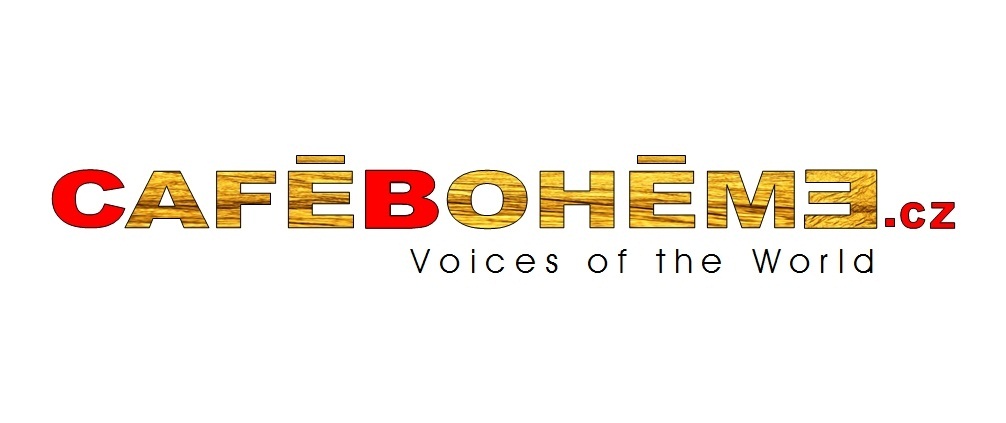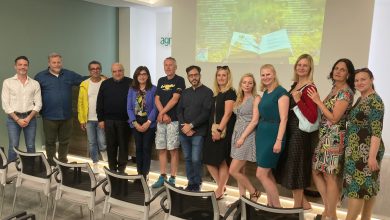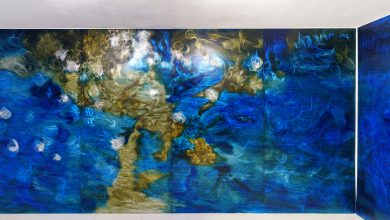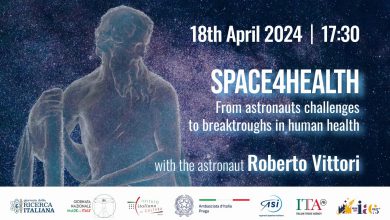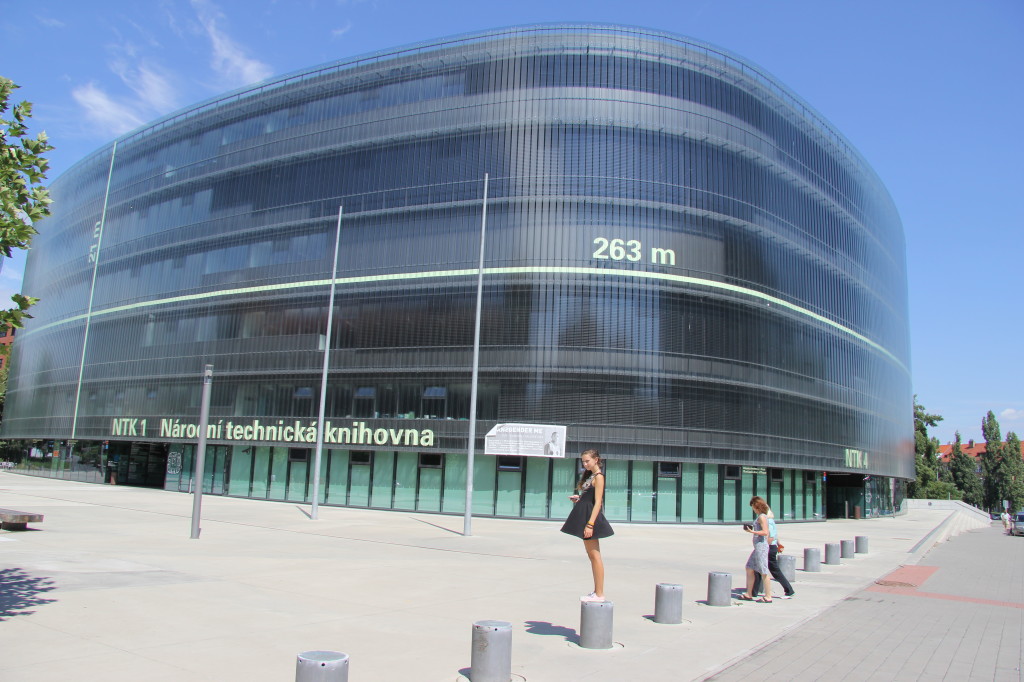
 Among the various administrative districts of the Czech capital, Prague 6 is one of the most extensive and includes several municipalities and areas of particular interest, such as Bubeneč, Hradčany and Dejvice: full of history and, at the same time, important centers of modern Prague.
Among the various administrative districts of the Czech capital, Prague 6 is one of the most extensive and includes several municipalities and areas of particular interest, such as Bubeneč, Hradčany and Dejvice: full of history and, at the same time, important centers of modern Prague.
Situated north-west of Hradčany and west of Letná, Dejvice is particularly famous for being one of the most favorite residential neighborhoods by the upper-middle class and many expats who, as is the case with Vinohrady, have chosen it as their Prague abode; also thanks to the interest of foreigners, the area is evolving all the time and provides luxurious houses, green spaces with facilities, international schools and many restaurants, with various cuisines from different countries. The district also has some of the most expensive houses in the city, including buildings with a particular and refined architecture, primarily located in the Bába and Ořechovka areas where, not surprisingly, there are many embassies. Several houses in the area have beautiful gardens and swimming pools and are situated far from the city traffic. Especially in the Bába area, you can enjoy the sight of a series of houses and small villas built at the time of the First Republic. External metal stairs, large windows and concrete block structures made of different materials, such as tiles, iron and glass, where enthusiasts and students of architecture can notice the influence and architectural ideas of Le Corbusier and Frank Lloyd Wright.
The district is connected to the city center by the “A” underground line and by trams and buses that in a  few minutes, allow you to reach both Malá Strana and the New Town. From the “Dejvická” metro station there is also a regular bus service that takes you to the Václav Havel International airport. According to archaeologists, the area was already inhabited at the time of the late Roman Empire, but the most reliable historical sources take us back to the tenth century, a period when Dejvice was part of the property that belonged to the Monastery of Břevnov. However, the recent history of the neighborhood started on 1 January 1922, when it officially became part of the city of Prague. Architecturally, the neighborhood has been greatly influenced by the Czech architect, urban planner and architectural theorist, Antonín Engel, who was particularly active during the twenties and the designer of the Čvut, the technical university, the university hub of Prague 6; author of the Vítězné Náměstí urban project and of many important buildings in other districts of the city. The Czech Technical University in Prague (České Vysoké Učení Technické v Praze), divided into various campuses located in this district, is one of the oldest technological institutes in Central Europe. Its presence in the area – with its canteens, meeting places for students, dormitories and sports centers – makes Dejvice an area that is subject to the pace of university life and, therefore, had to provide leisure facilities not only for Czech students, but also for students coming from abroad, which has contributed to making it one of the most cosmopolitan districts of the city. The creation of the Čvut as an engineering institute is due to Emperor Joseph I, who founded it in 1707. However, in 1806 it was transformed into a real Polytechnic, inspired by the famous Polytechnic School of Paris founded in 1794. After several transformations, in 1815 the school became part of the Charles University in Prague, to become independent again in 1863. At present, it has eight scientific faculties and is the flagship of the nation for scientific studies. Its motto is “Scientia est potentia” and many influential scientists have attended its classes, as for example, the physicist Christian Doppler and the chemist Vladimir Prelog, who won the Nobel in 1975.
few minutes, allow you to reach both Malá Strana and the New Town. From the “Dejvická” metro station there is also a regular bus service that takes you to the Václav Havel International airport. According to archaeologists, the area was already inhabited at the time of the late Roman Empire, but the most reliable historical sources take us back to the tenth century, a period when Dejvice was part of the property that belonged to the Monastery of Břevnov. However, the recent history of the neighborhood started on 1 January 1922, when it officially became part of the city of Prague. Architecturally, the neighborhood has been greatly influenced by the Czech architect, urban planner and architectural theorist, Antonín Engel, who was particularly active during the twenties and the designer of the Čvut, the technical university, the university hub of Prague 6; author of the Vítězné Náměstí urban project and of many important buildings in other districts of the city. The Czech Technical University in Prague (České Vysoké Učení Technické v Praze), divided into various campuses located in this district, is one of the oldest technological institutes in Central Europe. Its presence in the area – with its canteens, meeting places for students, dormitories and sports centers – makes Dejvice an area that is subject to the pace of university life and, therefore, had to provide leisure facilities not only for Czech students, but also for students coming from abroad, which has contributed to making it one of the most cosmopolitan districts of the city. The creation of the Čvut as an engineering institute is due to Emperor Joseph I, who founded it in 1707. However, in 1806 it was transformed into a real Polytechnic, inspired by the famous Polytechnic School of Paris founded in 1794. After several transformations, in 1815 the school became part of the Charles University in Prague, to become independent again in 1863. At present, it has eight scientific faculties and is the flagship of the nation for scientific studies. Its motto is “Scientia est potentia” and many influential scientists have attended its classes, as for example, the physicist Christian Doppler and the chemist Vladimir Prelog, who won the Nobel in 1975.
 The centre of Dejvice and main public transport hub for the neighborhood is Vítězné Náměstí, also known by the name of “Kulat’ák”. The circular-shaped square was built in 1925 and is located on the border between Dejvice and Bubeneč. From here, four major arteries branch out and connect the district with the rest of the city and below it is the underground station.
The centre of Dejvice and main public transport hub for the neighborhood is Vítězné Náměstí, also known by the name of “Kulat’ák”. The circular-shaped square was built in 1925 and is located on the border between Dejvice and Bubeneč. From here, four major arteries branch out and connect the district with the rest of the city and below it is the underground station.
The Dejvická metro station was inaugurated on 12 August 1978 with the name of Leninova. It is the second busiest Prague metro station after that of I.P. Pavlova, with an average of 118,000 passengers per day.
Particularly interesting from the constructional point of view, near Victory Square (Vítězné Náměstí) is the building that hosts the Crowne Plaza Hotel, built in 1950 during the communist era, whose architecture is an attempt to imitate the styles of buildings in Moscow. The austere and imposing building at number 5 in the Square, instead, dates back to 1935 and was designed by Engel between the nineteen-twenties and thirties and is home to the General Staff of the Armed Forces of the Czech Republic: it is from this building that all the armed forces of the country are coordinated.
Not far from the square is the modern building of Národní Technická Knihovna “NTK”, the National Library, also home to the Municipal Library of Prague 6. In this building, built between 2006 and 2009, and opened to the public on 9th September 2009, all the scientific and technical texts are now preserved there that used to be kept in the Klementinum library. The building was designed by different architects, such as Roman Brychta, and currently hosts about 1.5 million books.
However, Dejvice is also one of the districts of the city that has more green spaces and parks and can thus claim to have good quality air and a certain tranquility due to the relative absence of noise pollution, at least in those areas that are further way from the center. The city parks and the most important natural areas of the district are Stromovka and Divoká Šárka. The latter is a real nature reserve, which takes its name from a Czech mythology character, who according to legend, died by jumping off a cliff in this particular place. At Divoká Šárka there is also a public outdoor pool, which is crowded in the summer and where you can see hundreds of Prague people sunbathing. The paths and pleasant natural landscape make it an ideal place for long hikes on foot or by bicycle. From Bubeneč, instead, you can go to Stromovka park, an area that was fenced in 1226 by King Otakar II of Bohemia in order to turn it into his own hunting ground. In the sixteenth century an artificial pond was built in the park, which was then enriched with animals and plants. The park has been open to visitors since 1804 and Prague citizens, especially on Sundays, love walking along its pathways.
claim to have good quality air and a certain tranquility due to the relative absence of noise pollution, at least in those areas that are further way from the center. The city parks and the most important natural areas of the district are Stromovka and Divoká Šárka. The latter is a real nature reserve, which takes its name from a Czech mythology character, who according to legend, died by jumping off a cliff in this particular place. At Divoká Šárka there is also a public outdoor pool, which is crowded in the summer and where you can see hundreds of Prague people sunbathing. The paths and pleasant natural landscape make it an ideal place for long hikes on foot or by bicycle. From Bubeneč, instead, you can go to Stromovka park, an area that was fenced in 1226 by King Otakar II of Bohemia in order to turn it into his own hunting ground. In the sixteenth century an artificial pond was built in the park, which was then enriched with animals and plants. The park has been open to visitors since 1804 and Prague citizens, especially on Sundays, love walking along its pathways.
Another green zone of particular interest is Hanspaulka: a beautiful area of small villas also built in the nineteen-twenties, on a land that was once used for wine growing. There are many interesting monuments in the area, as for example, the Chapel of St. Michael the Archangel, the Chapel of the Holy Trinity and the Hanspaulka Castle, built in Baroque style in 1733, which gave its name to the whole area, and that used to be the site of many wine producing farms.
Dejvice is a district that been able to find a right balance between the demands of modernity, required by a city like Prague, and the preservation of its historical buildings and green areas: a successful combination, which undoubtedly makes it one of the most desired and well, know districts of the city.
by Mauro Ruggiero, from: Progetto Repubblica Ceca, 2014
